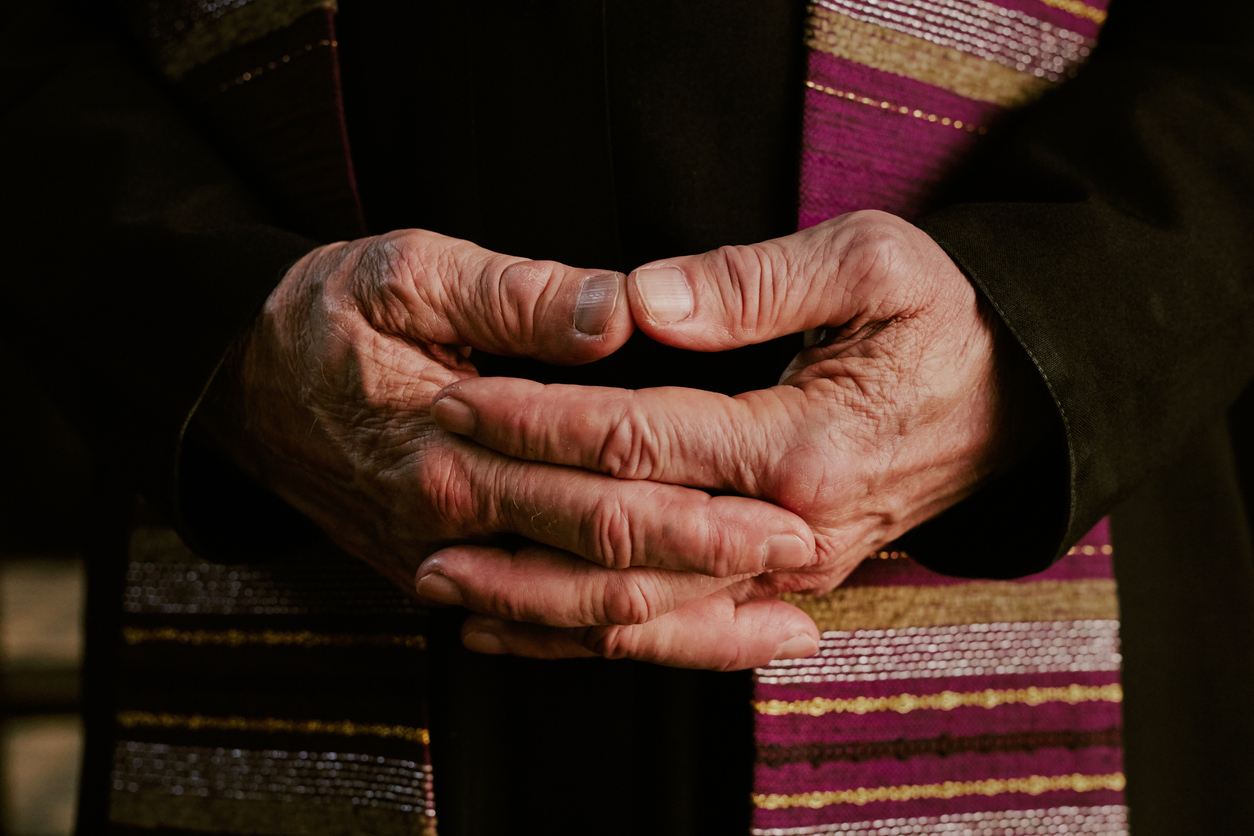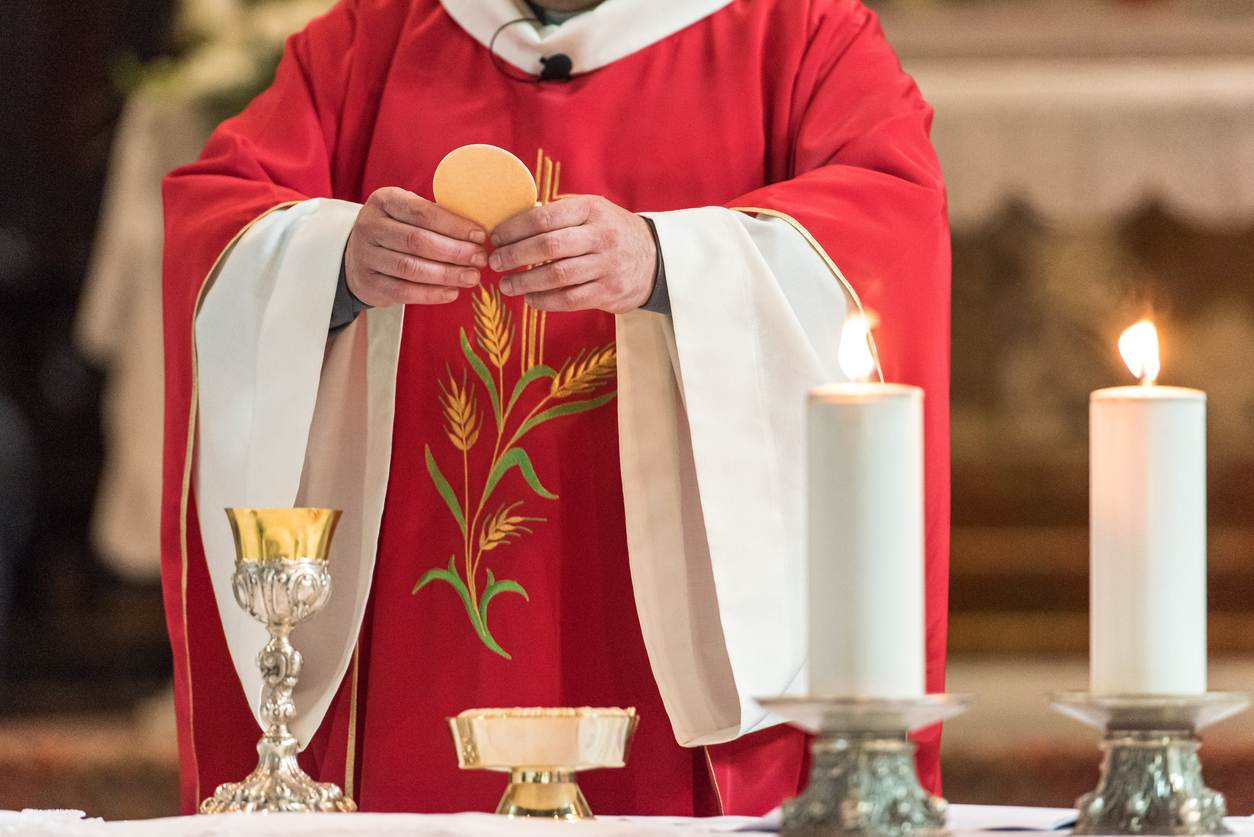As a uniform, clergy attire is a type of fashion and fashion has always played an important role in personal culture and identity, which is no less true for faith and spirituality.
Members of the clergy are expected to take pride in their appearance and fashion can play a big part in how they express their worship and connect to their larger community in the name of God. Read on to find out more about how fashion and faith intersect and enrich the Church-going experience.

The Clergy Attire Dress Code
There’s no fashion in spiritual identity without the very clerical items of clothing that make up the religious outfit. Whether it be differentiations between colour and style, culture or traditional wear, the church-going experience and the identity of religion is tied closely to each vestment worn.
The History of Clerical Attire Fashion
The origin of clerical attire can be traced all the way to the Roman Empire who wanted to distinguish the clergy from the common people with a formal white linen clerical shirt.
Over the centuries, clerical attire became more unique and distinguished. The Catholic vestments worn by members of the Roman Catholic and Eastern Orthodox churches have their own roots in the fashions of the 13th century.
But it wouldn’t be fashion if there weren’t constant updates and evolutions keeping the clerical attire modern and expressive of spiritual identity. New elements of clergy dress were being added as late as the nineteenth century. This is in reference to the iconic clerical collar, a detachable version of which was invented by Reverend Donald McLeod, a Presbyterian minister.
Elements of Clergy Attire
It can be quite confusing trying to wrap your head around all the different elements and vestments worn by various members of the Church, making clerical attire just as complex as other areas of fashion. The complexity of clerical fashion can often feel linked to exclusivity, making the clergy’s identity more unique and individual to their specific community.
Elements of the clergy dress code include:
- Albs – an ankle-length white dress-like vestment
- Cassocks – an ankle-length vestment, often black and often adorned with 33 buttons to symbolise the 33 years of Jesus’ life
- Surplices – a white loose vestment worn over cassocks and often found to be between hip-length and calf-length
- Amice – a white linen vestment under the alb that is worn on the neck and shoulders
- Chasuble – an ornate outer vestment with no sleeves. Often worn by Catholic and High Anglican priests during Mass
- Dalmatic – a long, loose vestment open at the sides with wide sleeves. Typically worn by deacons and bishops
- Cincture – a girdle or belt vestment worn with albs or cassocks that can either be a band or a rope
- Stole – a scarf vestment. The priest will wear it vertically on his shoulders while a deacon will wear it diagonally from the left
- Tippet – a ceremonial scarf vestment that hangs straight down at the front
Sustainability in Clergy Attire
Sustainability is one of the big focuses of modern fashion and is starting to become a prevalent part of the future of clerical attire. This helps to ensure that the vestments worn by the clergy help to promote eco-conscious behaviours without sacrificing the traditional identities associated with the attire.
Some materials used for making sustainable clerical shirts and attire include:
- Bamboo
- Recycled plastics
- Organic cotton
- Recycled fabrics
Organic materials and recycling processes help to ensure there is no waste of natural resources and no harmful chemicals or synthetic fabrics that can cause pollution and harm the environment.
Bringing sustainability into clerical attire and the church as a whole symbolises the strength of the clergy’s connection to God and the land.
What the Bible Says About Clerical Attire
The books of the Bible, such as John, indicate the importance attire has in reflecting the identity of a person and in reflecting the work of God and Jesus. The wearing of vestments also aids in the followers being able to identify the priests among them and understand their holy service.
The book of Samuel mentions ‘linen ephods’. Exodus defines ephods as garments worn upon the shoulders, a mantle that in religious terms can symbolise the weight of the holy office and the responsibilities the priest has to his religious duties.
The Bible also indicates fabrics and garments that shouldn’t be worn. For example, Leviticus and Deuteronomy reference not wearing wool and linen together in an outfit. Priests in the Bible would most often wear linen, including trousers, tunics and robes.
The use of linen in Bible clergy attire was likely useful for keeping priests cool in hotter weather conditions as well as helping to provide modesty, providing less distraction and allowing the focus of the religion to remain firmly on God and not on his representatives.
Biblical clerical dress was generally simplistic in style and fashion as the identity of spirituality and worship was by far more important than material pleasures and aesthetic.
The Symbolism of Clerical Fashion
The symbolism of clerical fashion is two-fold. The first is the religious symbolism of the vestments and what the priests represent while the second is the general symbolism and meaning of fashion and the influence style can have over identity.
The Meaning of Fashion in Clerical Attire
Fashion is a crucial part of cultures around the world and it is no less different for the culture of religion. The style of clerical attire influences how priests, bishops and their ilk are perceived and can change how they hold and present themselves, especially when they have become responsible for the religious communities they preside over.
It walks a fine line between the personal identity of the individual in the clergy and the larger group community they have become a part of.
When donning clerical attire, a religious leader may feel like they are stepping into a second skin, feeling more at home in themselves and celebrating their own personal beliefs and identity while also becoming part of something so much bigger than themselves.
This empowerment can help to connect you with other members of your church, whether you’re the reverend leading a sermon, a member of the choir or just a regular church-goer sitting in the pews.
Colour Symbolism in Traditional Catholic Dress
There’s no way to talk about fashion in relation to the clergy without highlighting the significance colour has on how religious identities are perceived.
Common colours found in church vestments include:
- Black – associated with humility, mourning and remembrance. In Christianity, black is also commonly connected to death and funerals.
- White – associated with purity, holiness and innocence. In Christianity, it is a common colour at baptisms and weddings.
- Purple – associated with penance and solemnity. It is worn at sombre celebrations and serves as a reminder to pray for absolution, especially for the departed at funerals.
- Red – associated with passion, sacrifice and blood, commonly in reference to the sacrifice of Jesus. Red is worn by cardinals and symbolises their devotion to the order.
- Green – associated with growth, life and hope. It’s commonly connected to the resurrection of Christ.
Besides the meaning of each colour, they are also only worn during specific seasons and days of the year, commemorating events and celebrations.
Purple for example is worn during Advent and Lent. Green vestments are worn in the Ordinary Time that takes place between Easter and Christmas and vice versa. This is in preparation for the celebrations of the birth and resurrection of Jesus, in keeping with the symbolism of life and growth.
Red is often worn during celebrations that have close ties with the Holy Spirit. These include Pentecost, Good Friday, the feasts of various martyrs and confirmation.
Fashion plays an intrinsic role in how religion presents itself, allowing members of the clergy to take pride in their appearance and in their connection to Christianity with each vestment carefully chosen and placed to represent their mission and devotion to God.
You can learn more about the importance of clerical attire by reading our list of interesting facts about clerical shirts and collars. Head to our Choralia shop to browse our selection of clerical church dress for yourself and find the perfect garment for you.
